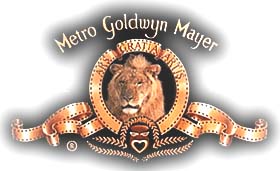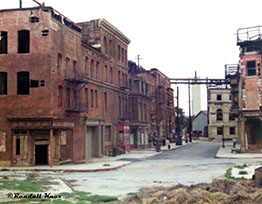 MGM's Culver City, California Lots The studio later known as MGM was founded in 1915 by Thomas Ince as Triangle Pictures. Ince sold the studio to Goldwin Pictures in 1919 when that company moved west from Englewood, New Jersey. Ince moved down the street by five blocks and created a new, more elgant studio which was only another five blocks from the new Hal Roach Studios site. Metro-Goldwyn-Mayer was formed in 1924 when the theater company Loew's Inc., owner of Metro Pictures Corporation, acquired Goldwyn Pictures Corporation and Louis B. Mayer Pictures and merged the three companies. MGM soon became one of the most powerful and most prestigious of the major production companies, however, the anti-trust case brought against Paramount by the Justice Department in 1939 over their tight ownership of production, distribution and exhibitors (finally settled in 1949) caused a complete restructuring of the industry. This restructuring hurt MGM too and resulted a long, slow decline in the company's profits and prestige. In 1970 financier (sometimes referred to as a corporate raider) Kirk Kerkorian bought MGM and proceeded to dismantle the operations and sell off the studio assets (e.g., props, production equipment, property) preferring to "cash out" the facilities rather than run it as a movie studio. By 1986 MGM had become a hotel company and had almost completely stopped making movies. Also in 1986 the studio was sold to Ted Turner who immediately sold the studio lot to the newly formed Lorimar Telepictures while Turner retained the extensive film and script libraries. MGM occupied three lots covering 180 acres (73 hectares) in Culver City between 1924 and 1986. The main lot, with all the production facilities, remains today as Sony Pictures Entertainment's Columbia and TriStar Pictures [Note: In September 2005 Sony bought MGM! Soon to be returning to the old lot]. Lot #2 (on the other side of Overland Avenue from Lot #1) and Lot #3 (eight city blocks south on Overland from Lots #1 & #2) covered 38 acres and were populated only with sets. The pictures here are of Lot #2 and Lot #3 prior to their sale for redevelopement into housing in the early 1970s. The pictures from Lot #3 were taken after the property was sold so studio security had abandoned it. Oddly, no one challenged my college friend, Debbie Soliday, and me as we wandered through the Western town, the Andy Hardy street, the European village and other sets. I figured Lot #2 would be similar after it too was sold, however, after jumping the fence at sunrise one morning, I was greeted by two dobermans after I had wandered for a few minutes. They stood in my way and, as I moved back toward the fence, they followed but kept their distance from me. So much for that photographic expedition! A week or so later security had also been pulled from the lot as the demolition crew was due in shortly Having grown up near MGM and watching the filming of "The Twilight Zone" episode "You Drive" on my street; the filming of scenes from "Where the Boys Are" where the back side of the Thalberg building did duty as a police station and numerous other movies and TV shows I can attest that toward the end - prior to Kirkorian - the MGM property was getting quite run down. It was obvious little was being spent on maintenance. It was entertaining seeing props and sets being towed by slow tractors on small trailers from Lot #1 the eight blocks to Lot #3. Sony Pictures Entertainment has brought the main lot back to the elegant state it should be while maintaining the history. |
